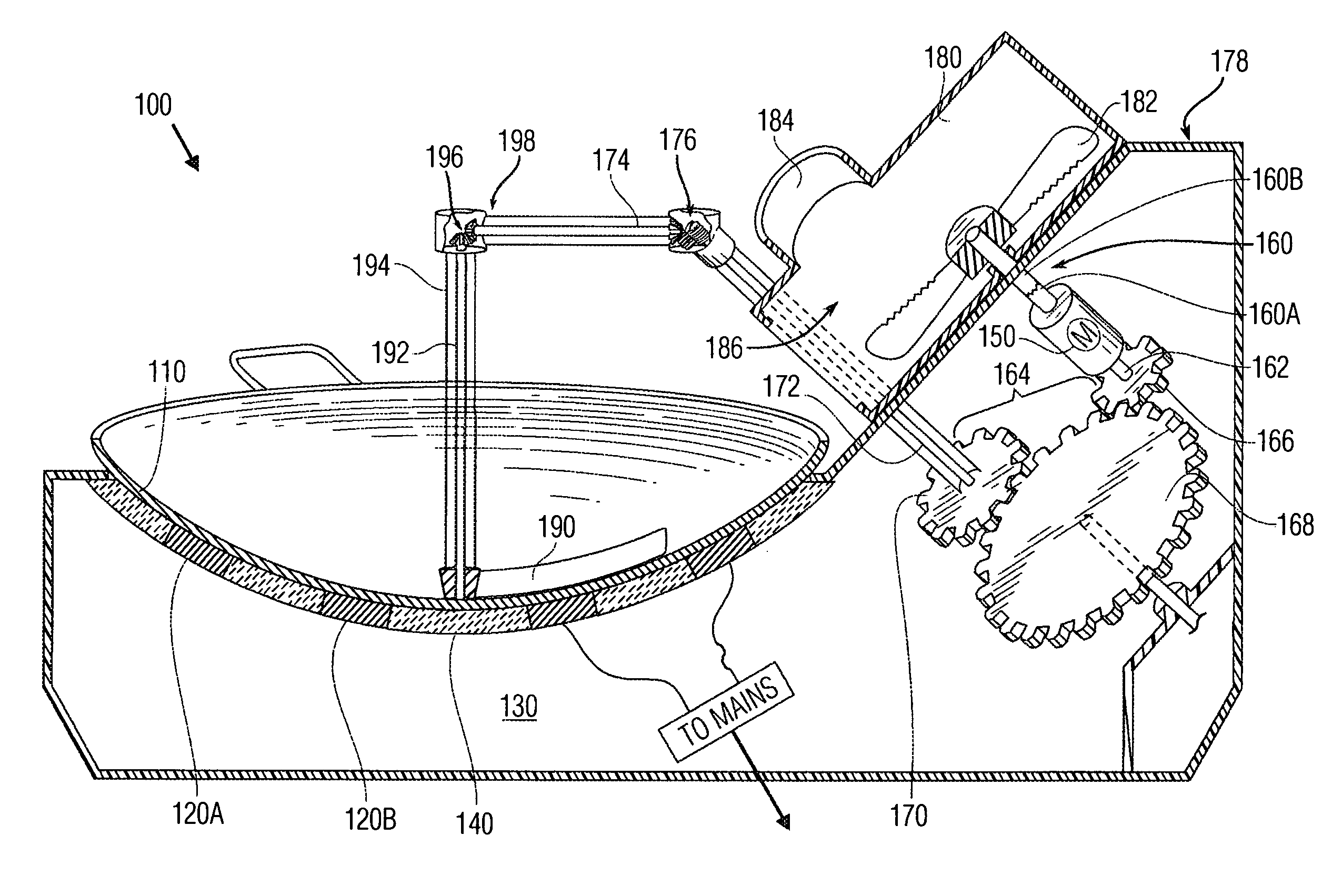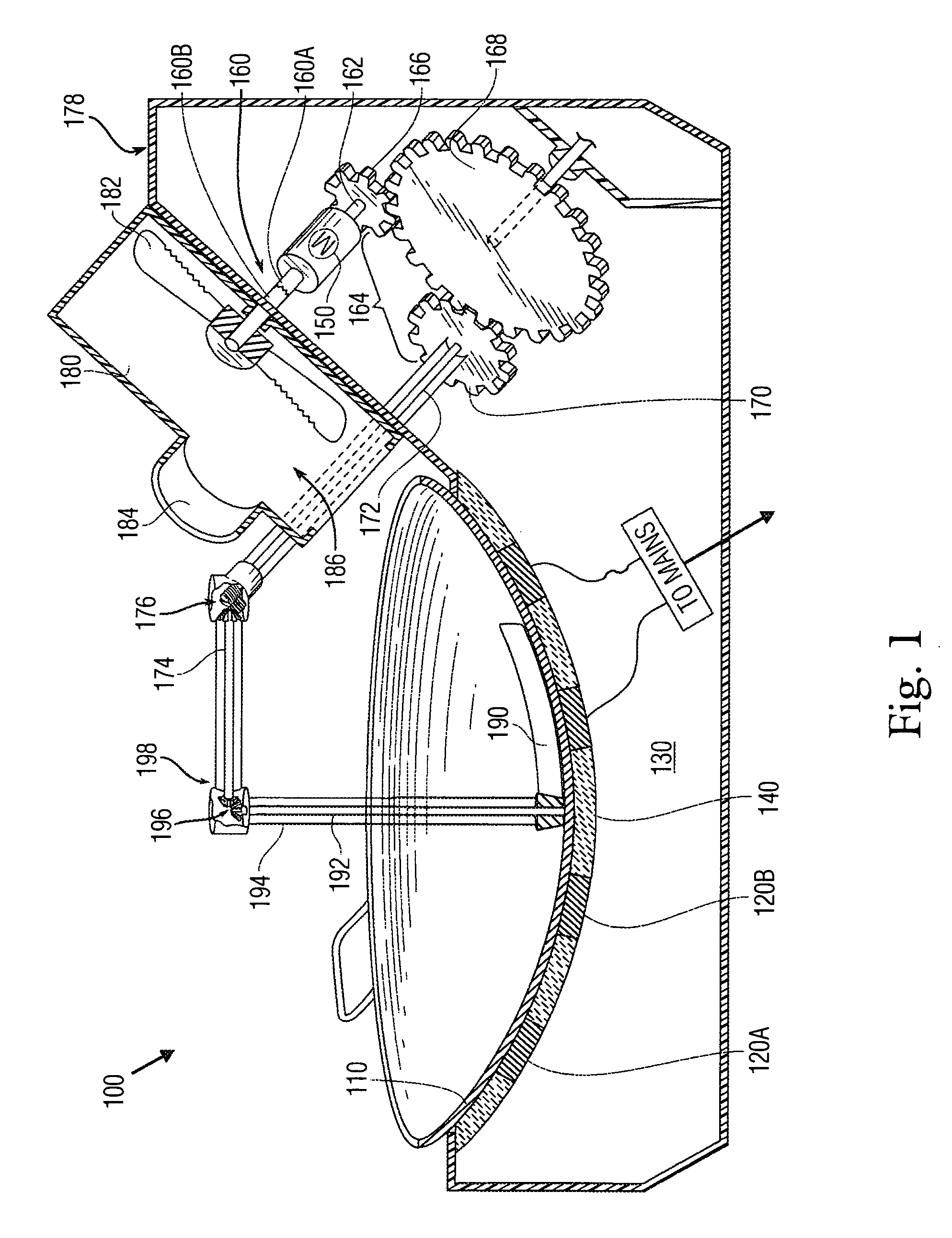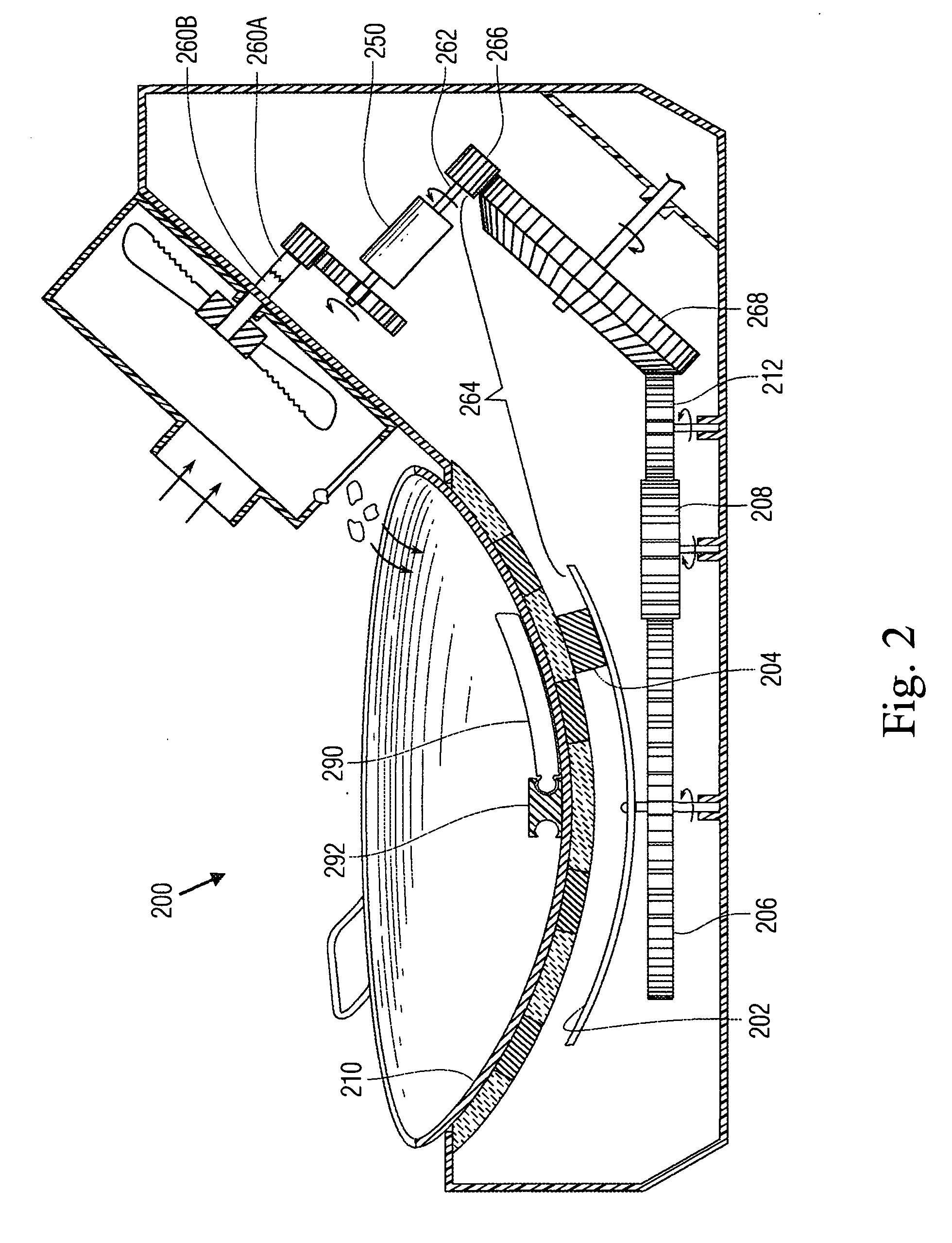Electric wok having food processor with automatic feed
a technology of automatic feed and electric wok, which is applied in the direction of electric/magnetic/electromagnetic heating, cooking plants, and vessels with intergral heating, etc., can solve the problems of time-consuming and inefficient processing of fresh food to create such meals, and addresses a very limited range of cooking options
- Summary
- Abstract
- Description
- Claims
- Application Information
AI Technical Summary
Problems solved by technology
Method used
Image
Examples
embodiment 100
[0030] Preferably, the embodiment 100 includes a temperature sensor (e.g., thermocouple) that prevents the blade 182 from rotating before the cooking surface (or heating element 120) reaches at least a prescribed temperature. This can be done either by disconnecting the motor 150 (e.g., via an internal switch (e.g., a relay) that renders inoperable any external blade controls (see switches 640 and 650 of FIG. 6) or by decoupling the shaft 160, such as by separating shaft portions 160a and 160b to thereby isolate portion 160b that drives the blade 182. This is preferred because it is not desirable to direct food to the cooking surface unless the cooking surface is already at a temperature suitable for cooking food. Indicators on the base advise the individual when the unit is ready to cook (i.e., the cooking surface has been heated to a temperature suitable for cooking the food) and thereafter permit the food processing and cooking operations to begin. A light can be provided on the ...
second embodiment
[0036] Referring now to FIG. 2 in which like components have been referenced with corresponding reference numerals, a second embodiment is illustrated in which a spatula 290 is driven by a gear train 264 by a magnetic coupling from below the wok pan 110. More specifically, a second shaft 262 is coupled to a drive gear 266 which turns an idler gear 268 which, in turn, rotates further gears 212, 208, 206 in order to rotate a permanent magnet 204, mounted on a concave face 202 of the gear 206. Thus, the motor 250 drives the gear 206 through the gear train 264 and causes the spatula 290 to rotate under the influence of the rotating magnet 204. The spatula pivots from a joint (e.g., a ball joint) about a center of the wok pan 210 within a raceway 292 attached to the pan in a conventional way (e.g., by a weld) or is integrally formed therewith. As in the previous embodiment, the gear train 264 can be driven independent of the shaft portion 160b to permit a stirring operation independent o...
third embodiment
[0042] FIG. 7 illustrates a third embodiment in which the container 180' is positioned above the wok pan 110. In this embodiment, food is again introduced into the container through port 184 but this time emerges from outlet 186' directly above the wok pan. Processed food drops from the container 180' directly into the pan. The base 130' contains gearing suitable for rotating the blade 182, such as through a flexible linkage 138, shown schematically. In addition, a hinge 135 permits the container 181 to be pivoted clear of the top of the wok pan 110.
[0043] The blade 182 can in other embodiments be driven to rotate directly within the wok pan 110, more preferably under a cover 185 (see FIG. 7) having an inlet port 184 for introducing food. The cover 185 is sized to seat on top of the wok pan 110. The blade can be driven in the same manner as the spatula of FIG. 1, and can be oriented in a first position for cutting food and in a second position for stirring food, if desired. For rele...
PUM
 Login to View More
Login to View More Abstract
Description
Claims
Application Information
 Login to View More
Login to View More - R&D
- Intellectual Property
- Life Sciences
- Materials
- Tech Scout
- Unparalleled Data Quality
- Higher Quality Content
- 60% Fewer Hallucinations
Browse by: Latest US Patents, China's latest patents, Technical Efficacy Thesaurus, Application Domain, Technology Topic, Popular Technical Reports.
© 2025 PatSnap. All rights reserved.Legal|Privacy policy|Modern Slavery Act Transparency Statement|Sitemap|About US| Contact US: help@patsnap.com



